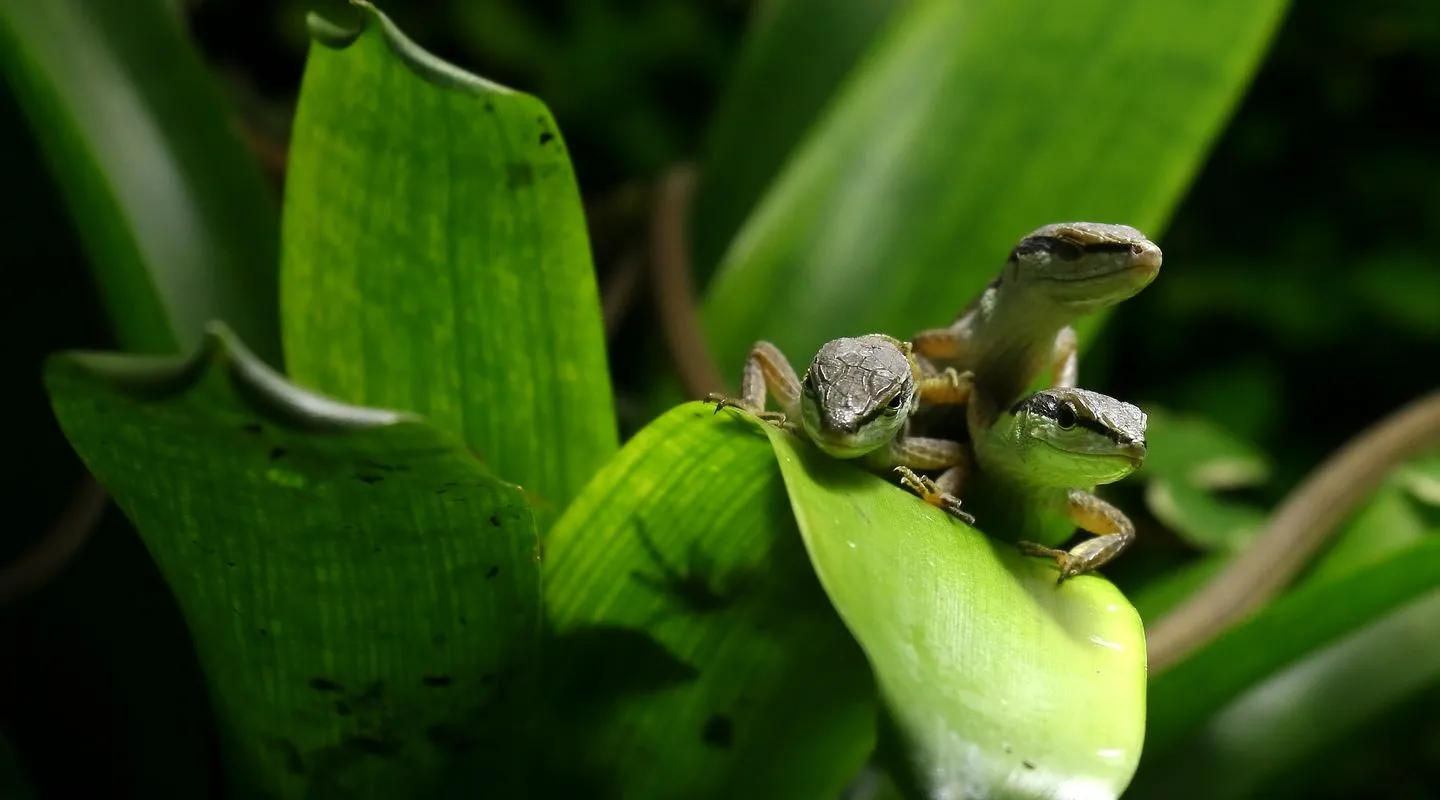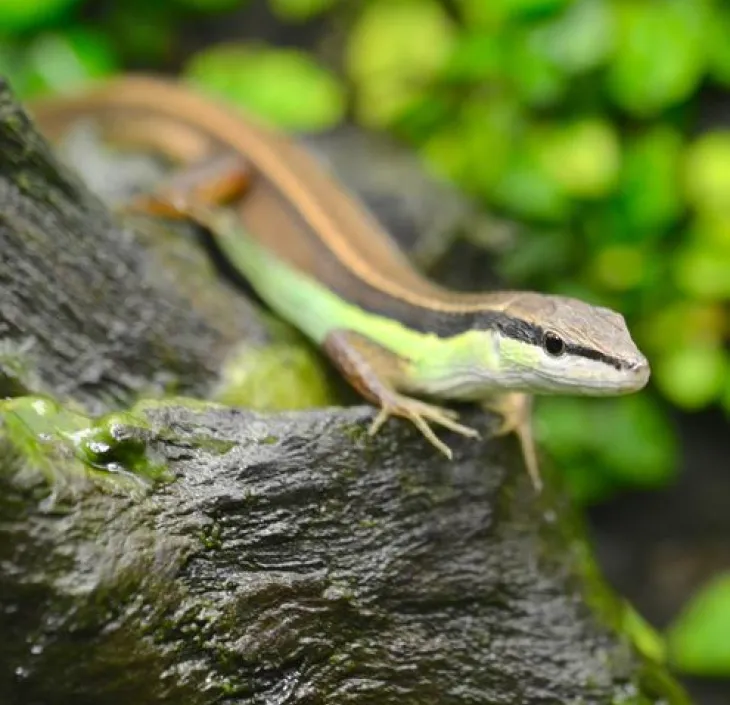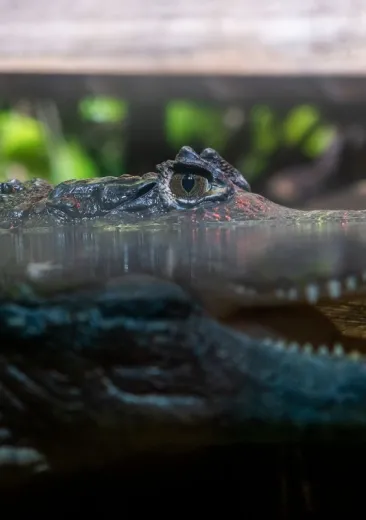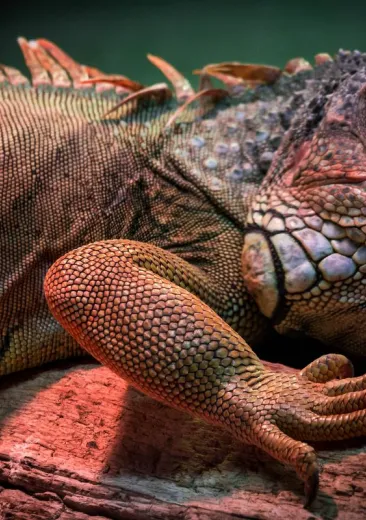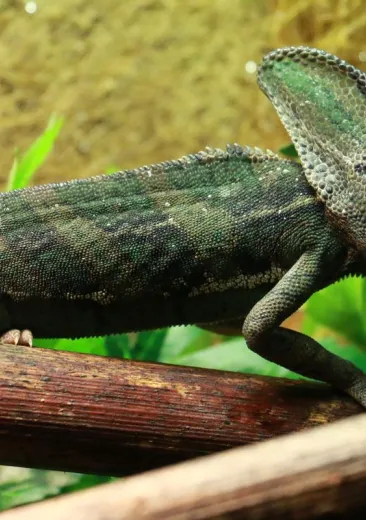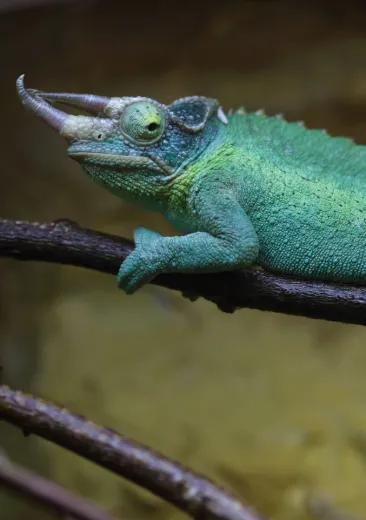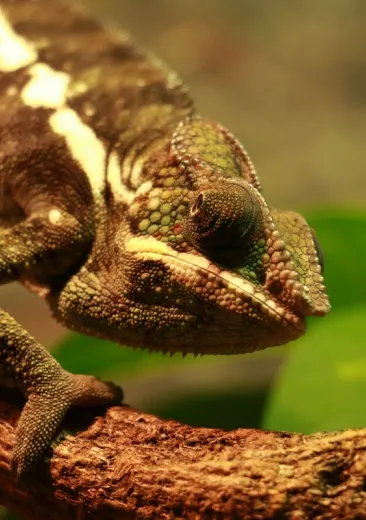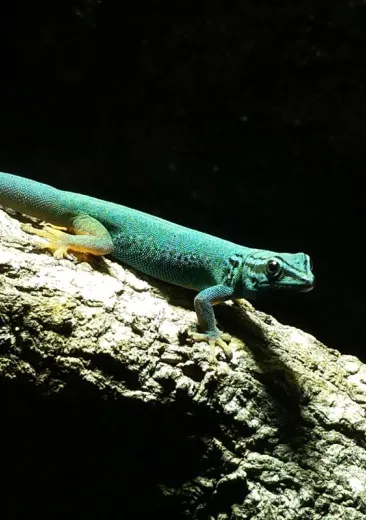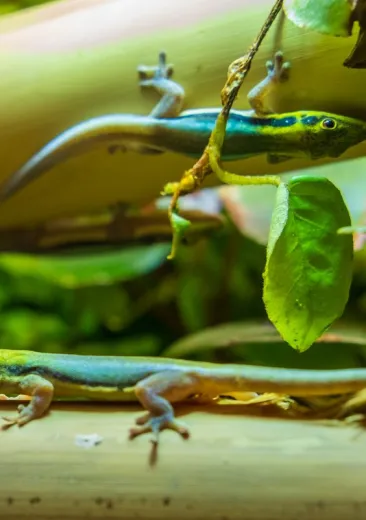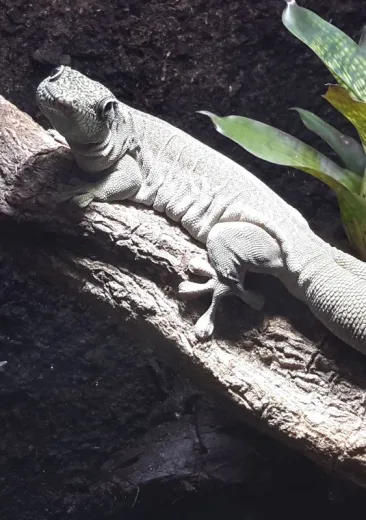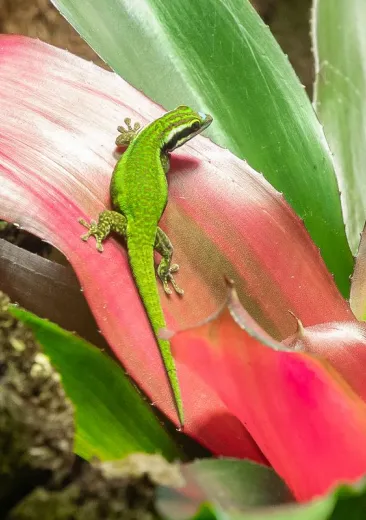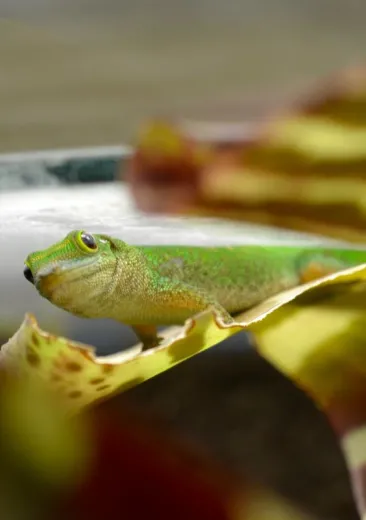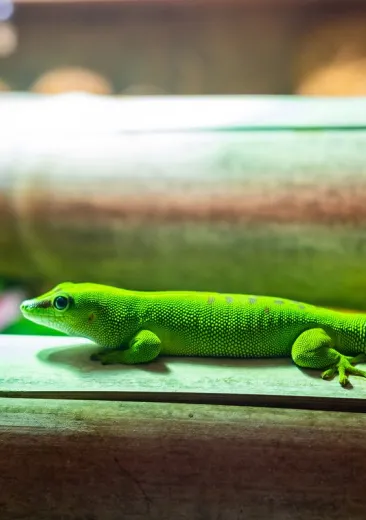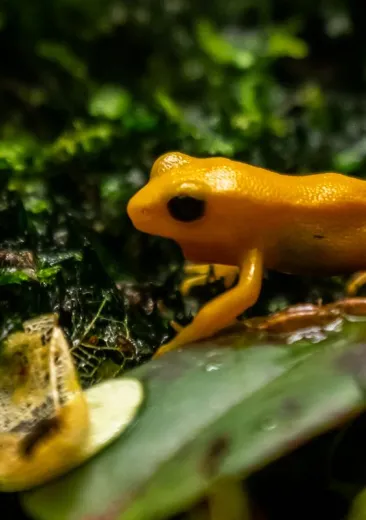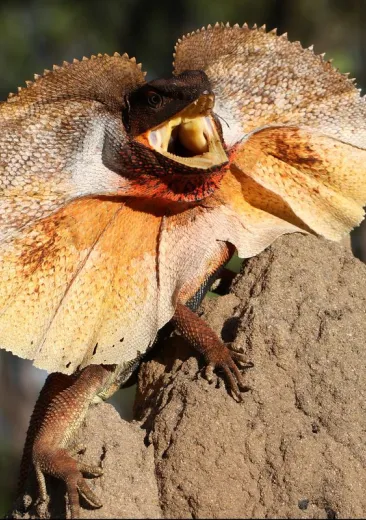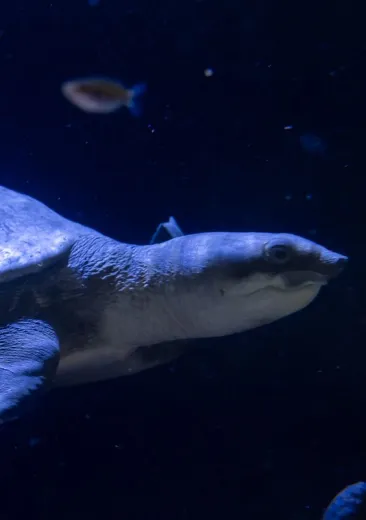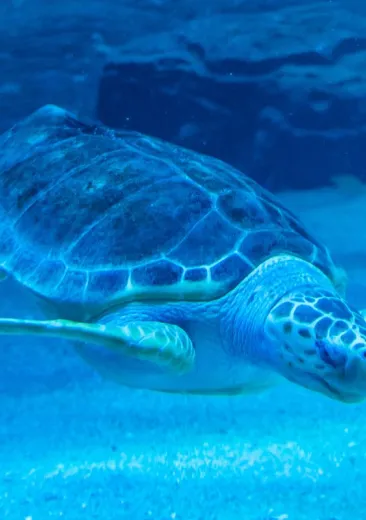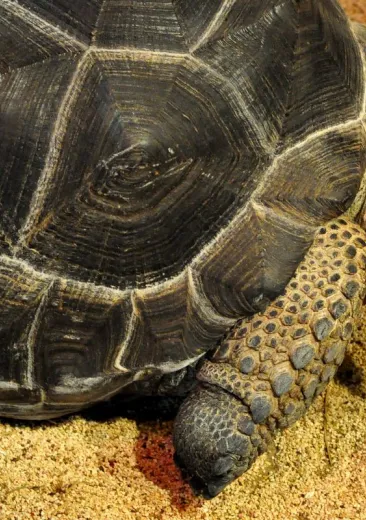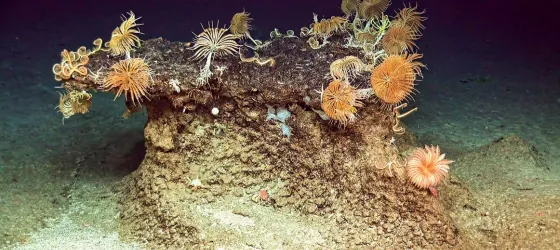This species is oviparous and lays its eggs 2 to 3 weeks after mating. Semi-tree dwelling species found in India, China, Thailand, Laos, Vietnam and Indonesia.
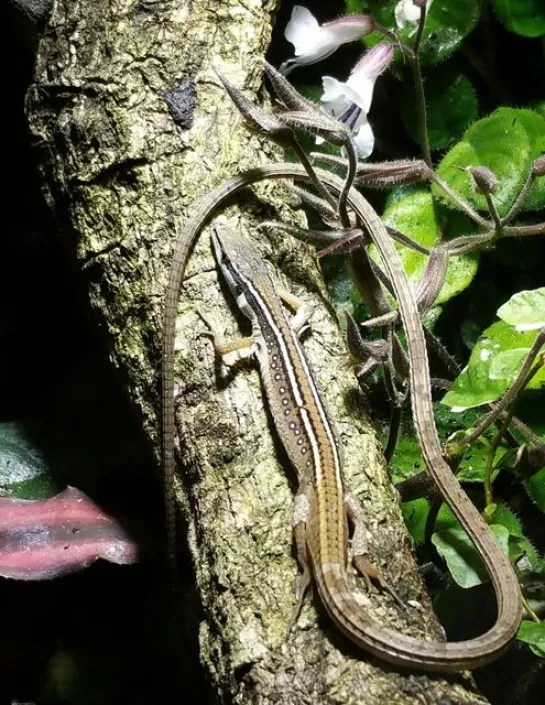
Identity card
Asian Grass Lizard
- Scientific name:
- Takydromus sexlineatus
- Family:
- Lacertidae
- Class:
- Reptilia
- Phylum:
- Chordata
- Year of description:
- Daudin, 1802
- IUCN Status:
- Least Concern
- Distribution:
-
India, China, Thailand, Laos, Vietnam and Indonesia.
- Habitat:
-
In rice fields, tall grass, clearings and on the edge of tropical forests.
- Size:
Between 5 and 8 cm for the body, and 20 to 25 cm for the tail.
- Diet:
-
Insectivorous
